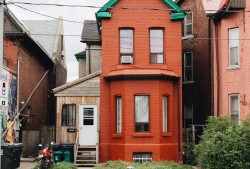Unlocking the Magic of Architecture: Exploring the Linguistic Wonders of Houses in English
- 房百科
- 2025-02-15
- 44
Introduction:
Imagine wandering through a global village where buildings speak the universal language of design – that's where the beauty and complexity of architecture's vernacular lies. In this vibrant world, the English vocabulary for houses is a key to deciphering architectural marvels, history, and cultural nuances. Let's embark on a journey to unravel the fascinating intricacies of "houses" in English, making our homes a bridge between form and function.
1、The Architectural Vocabulary:
Just as words paint vivid pictures, so do architectural terms. "Mansions" and "cottages" are like fine brushes, capturing the grandeur and intimacy of different structures. A "gable" roof is a smiley face on a building, while a "gable end" whispers stories of cottage charm. The "dormer window" adds a playful wink, and the "gable dormer" is a touch of sophistication.
2、Context and Cultural Significance:
In England, a "terrace" row of houses echoes with history, while in America, a "split-level" home embodies modernity and functionality. Each term carries a story, whether it's the "Victorian gingerbread trim" or the "Japanese tatami mats" that speak volumes about regional aesthetics.
3、The Language of Sustainability:
As we strive for greener living, " Passive House" and "Net Zero Energy" homes are becoming common parlance, reflecting our collective concern for the environment. These phrases not only convey technical prowess but also symbolize a shift towards eco-conscious design.
4、The Impact on Urban Planning:
Urban planners use terms like "mixed-use development" and "smart growth" to shape cities. These concepts emphasize harmony between residential, commercial, and recreational spaces, creating neighborhoods that feel both cozy and connected.
5、Communication in the Global Realm:
For architects, engineers, and real estate professionals, proficiency in the English language when discussing buildings is crucial. It fosters international collaboration, allowing ideas to flow seamlessly across borders, and helps architects like Zaha Hadid and Frank Lloyd Wright's legacies reach diverse audiences.
Conclusion:
Understanding the English vocabulary for houses transcends mere linguistics; it's a gateway to appreciate the artistry, function, and global dialogue that define our built environment. Whether you're an enthusiast, a designer, or just curious about the world, learning these terms opens doors to a richer understanding of the places we call home. So, the next time you marvel at a stunning building, remember, its name might just be the key to its soul.












